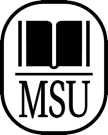
ISSN 1934-8428 (electronic version)
The particle method is a numerical method for modeling large systems based on their Lagrangian description.
The discontinuous particle method is of the “particle–particle” type and consists of two main stages: predictor and corrector. At the predictor stage, a particle shift occurs. At the corrector stage, a partner for interaction is selected among the neighbors of the particle, most influencing the local dynamics of the system. The “discontinuity” of the method lies in the method of density correction only one of the interacting particles, due to which the restoration of the distribution density occurs in a minimal region defined by only two selected particles, which leads to smearing of the front by only one particle.
The novelty of the method presented in this article is that The density of the particles is put in the foreground, not their shape. The criterion for restructuring is the preservation of the projection of the mass onto the plane passing through the centers masses of interacting particles. The neighbor for density correction is selected using the “impact parameter”. The density is constructed using two selected interacting particles, which makes it possible to reduce a two-dimensional problem to a one-dimensional one.
The effectiveness of the method is presented using the Crowley test as an example. It is shown that the Runge–Kutta method at the predictor stage significantly increases the accuracy of the numerical solution.
Our Lagrangian approach to constructing the particle method contrasts with another frequently used particle-particle method, the smoothed particle method (SPH).
